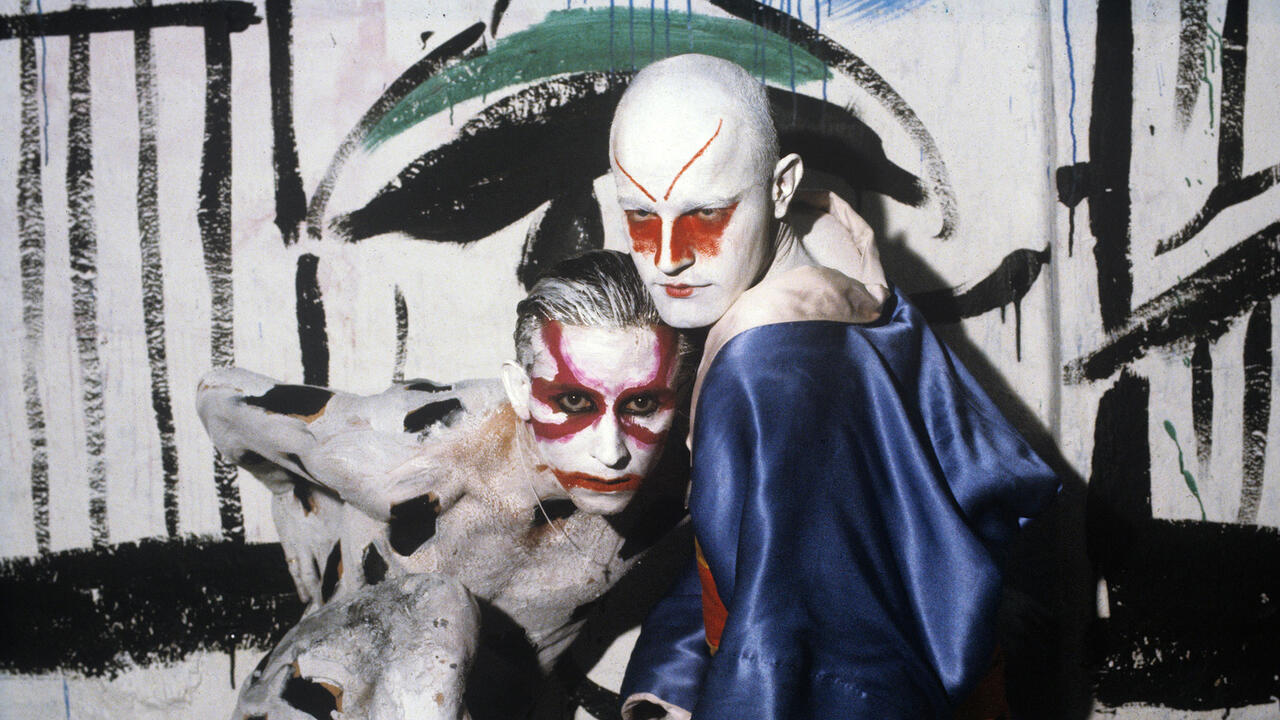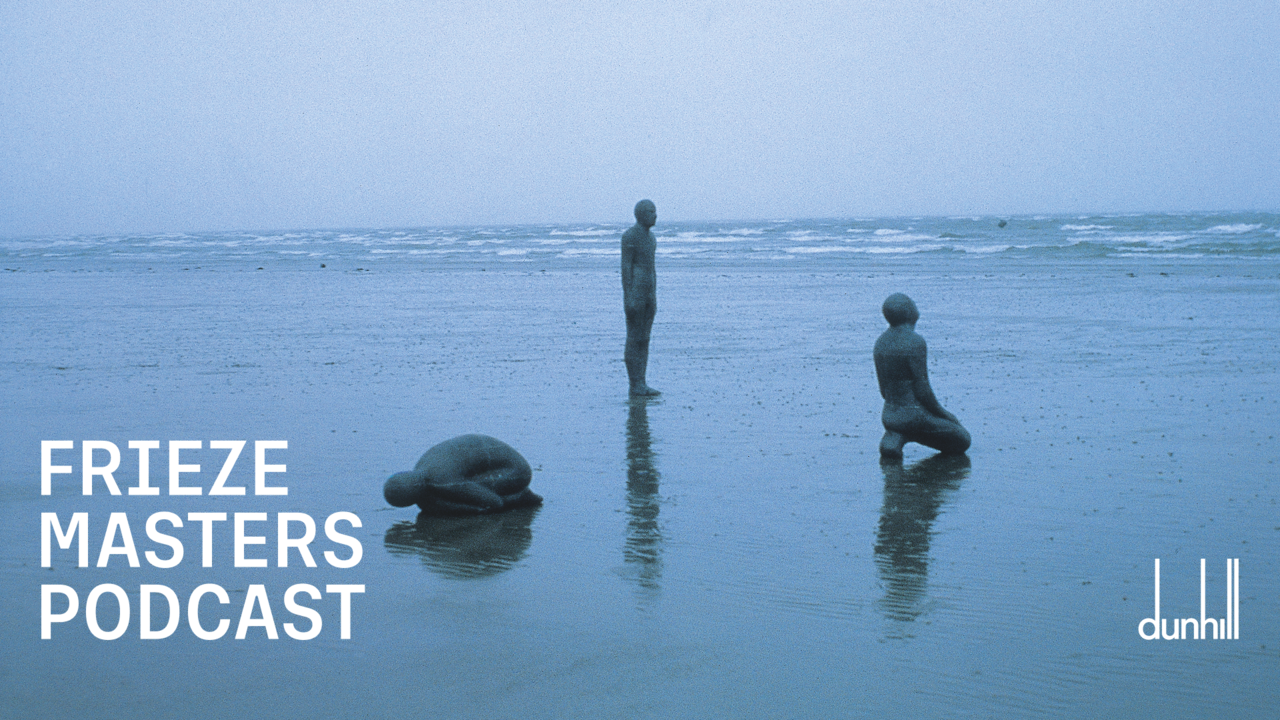John Kelsey
Galerie Buchholz
Galerie Buchholz

What unites all superheroes with their villains is the fact that, as doubles, both are tied to the possibility of their unmasking. But behind the mask, we know, lies yet another disguise. In the sphere of art – like the online arenas of trolls and avatars – persona and essence are fused. Exposition, in its two senses of aesthetic presentation and revelatory display, is a mere trap door to a sequence of illusory effects.
This was the first solo show of a multifarious figure that, for years now, has crawled downtown Manhattan as the perennial ‘man with the hat’: John Kelsey is the critic/artist/gallerist associated with the New York-based collective Bernadette Corporation and gallery Reena Spaulings Fine Art. Kelsey’s denudé presentation as a solo artist showed a reluctant actor, pushed on stage, evolving into a sentimental ham. These works were, on the surface, emotional, hyper-personalized, faux-autobiographical. A conscious hyperbolization and sentimentalization of the act of exhibiting, these works also stood in contrast to the arguably cynically-grounded practices of Kelsey’s previous collective associations.
The show comprised an array of watercolours, like Google Data Center, The Dalles, OR III (all works 2013) mostly depicting pastoral, aerial views of data centres (those material nodes where the Internet is ‘stored’). Two others were scrawled, moody portraits of ex-girlfriends – one made with tobacco ash – recalling relations that have gone up in smoke (Please Respect My Decision to End this Long Distance Relationship Because It Is Not Working for Me). Still others depicted simply the eerie, hybridized names of Internet spammers (‘Rosamund Blazek’, ‘Faustine Honts’) or the outlines of different-sized coins. Beside these, four text pieces (three UV direct prints on vinyl; one on foamcore) were strewn throughout the gallery and floor, leaned up or slumping against a wall. The texts were made by reassembling lines from spam messages: misdirected, esoteric, histrionic missives to no one. A piece of foam shrugged defensively, crammed in a corner between two paintings, a UV printed nine-line poem ending fortuitously: ‘had like his ruin for to be’.

‘How does a painting belong to a network?’ asks David Joselit in a 2009 essay published in October. In his expressive, idyllic scenes of deceptively quiet data centres, Kelsey literalizes Joselit’s question. These paintings seem to answer: a painting cannot in fact ‘belong’ to a network, because that network itself – of ex-girlfriends, false Facebook friends, spammers – implies its opposite: falling out, alienation, distance, breakup, deception, ‘unfriending’. Kelsey’s theme illustrates the failure of connection brought upon by social networking. (This is the same paradox that enables a socially-inept individual like Mark Zuckerberg to found an entire corporation for making ‘friends’.) The clumsily rendered former girlfriends represent the impossibility of relating to anyone in a lasting way, while data centres themselves collapse the grand fantasy of online connection into one sad, literal, mechanic state. The portraits and landscapes are hazy and watery – almost sappy – as if beer goggles, tears or eaux de Cologne had inspired their production. Yet they were touching and revelatory in their paradoxical sentimentality: their split between their material and their theme.
There’s an irony to the Occupy movement’s demonization of Wall Street; after all, the trades themselves now occur 30 miles from Manhattan, in a huge data centre within the otherwise unremarkable town of Mahwah, New Jersey. Our material and symbolic hubs are increasingly separate. These poles correspond to the cynic and sentimentalist in Kelsey, respectively. Take the afore-mentioned Poundian line repeated in three text pieces: ‘had like his ruin for to be’. This kind of phrase is included in junk mail in order to pass through spam detection software. This line was, in fact, first published in 1865 in a poem modernizing an ancient Scottish ballad (‘for drunkenness, you plain may see / had like his ruin for to be’). On 9 August 2012 it inexplicably appeared on a phishing site advertising ‘Six Pack Routine Help: Ab Exercises on a Ball’ (particularly ironic, given the ruin the phrase elicits). It’s tellingly inexplicable how this obscure line travelled from its origins as literary flotsam to a spam-related webpage before arriving as one of Kelsey’s found poems.
Kelsey’s press release adopts the unstable, confessional mode of the Proustian excavator of memory: ‘Watercolors are what the creative ones in the family did while summering …[a] way of avoiding each other by the sea.’ This line is not as straightforward as it sounds, since it implies alienation amid communal comfort. But what better way to sum up a moment such as ours, where the utopian promise of social media has already begun to seem like an anti-social crutch, than Kelsey’s poignant ‘alone-together’ state? These watercolours, simplistic and anonymous, articulated in a moving, albeit deceptive, way the paradoxes of our bizarre, networked state. If the gallery is turned into a ‘data centre’, does the artist not become just another spammer? After all, what is the lure of every scammer, spammer, or ‘hack’ artist, but the promise of real connection? In practice, that connection is what they foreclose. But the real deception is our own.















